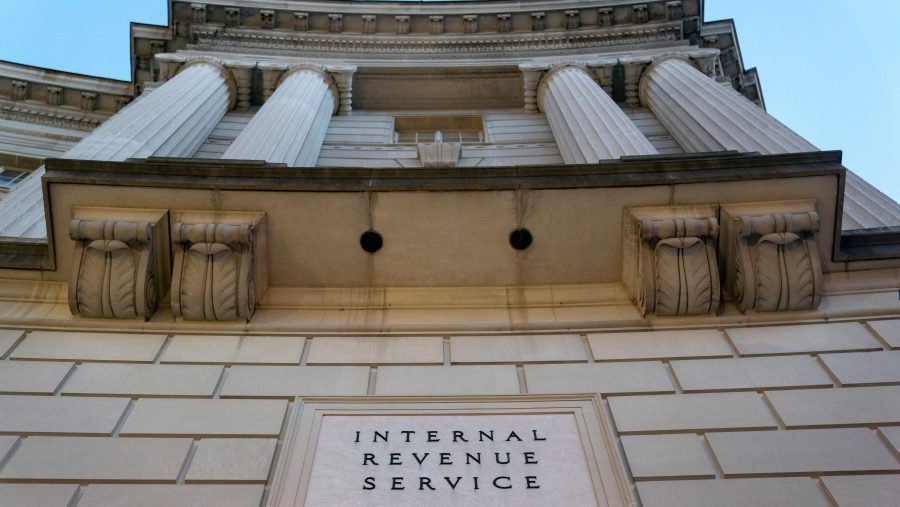How the IRS is using $60 billion to make filing taxes less painful

If you asked for an extension on last year’s taxes, the bad news is the filing deadline was yesterday. The good news is if you got it in, refunds are expected to reach you faster than they have in recent years.
The notoriously obsolete technology running the Internal Revenue Service is getting a massive update. That’s thanks, in part, to a $60 billion cash infusion from last year’s Inflation Reduction Act.
The IRS’s technology was considered cutting edge in the 1960s, but Erica Neuman, assistant professor of accounting at the University of Dayton, tells Marketplace’s Lily Jamali the IRS needs all the IT help it can get.
The following is an edited transcript of their conversation.
Erica Neuman: Honestly, since 2010 or so there’s been kind of a significant string of cuts to the budget of the IRS. That’s ultimately led to this dramatic backlog, a reliance on a pretty archaic computer system from the 1960s and a lot of retirements of the IRS personnel. They’re just having some trouble keeping up. When the pandemic hit, the IRS was also tasked with a number of government programs, such as sending out stimulus checks and the advanced child tax credit payments, things like that. None of those factors helped relieve that backlog. They in fact exacerbated it.
Lily Jamali: What is their technology like? You mentioned they had this technology from the 1960s and frankly, I think a lot of people imagine the IRS running on some pretty old systems.
Neuman: The IRS is currently working on a system called the Individual Master File, or IMF, from the 1960s. And honestly, as early as the 1980s, the idea of the IRS as a technologically savvy agency has sort of been put to bed. So, when the IRS first embraced technology in the ’60s, they were ahead of the curve, and then basically never caught back up. The most recent iteration of technology modernization at the IRS is this project called CADE2, which was implemented in 2009 and is set to be completed in 2030. So obviously, a pretty long window of time there.
Jamali: Yeah, right? What could change in 21 years?
Neuman: I know. Especially nowadays, right? So, it’s a big transition. And there’s a lot of data and logic patterns, things like that, that need to be transferred over. And there’s a lot of challenges associated with that transfer, not least of which is that those individuals trained in that computer language and those computer programs are retiring, and fewer are being taught those programs in school. It’s taking a long time.
Jamali: It sounds like change is already underway at the IRS. What do we know about how the agency is using its IRA funding, especially on the tech front?
Neuman: There’s a lot of lore and a lot of talk right now about how the IRS is going to use that money to hire an army of agents. They do want to increase their hiring, but what they really want to do, I think, is try to invest that money in becoming a more efficient agency. So basically, trying to catch up with the private sector and other sections of the government that have advanced, technologically speaking.
I’m not sure that taxpayers will have their minds blown by the technological advances at the IRS. It’s more catching them up so that taxpayers can interact with the IRS online, just like they can interact with other private companies online. We’re used to real-time data access, voice and chatbots online, things being updated in real time. Those are the types of simple advancements that they could make with those funding increases.
Jamali: Catching people trying to get out of paying their taxes is probably one of the harder tasks that the IRS has. How is this infusion of money going to help them on that front?
Neuman: There’s a lot of different ways that the IRS can use this funding to help aid in their enforcement efforts. And actually, the IRS has been kind of using analytics and technology since the 1980s to try to aid its enforcement efforts. But basically, what’s changed as of late is, first, the breadth of data available to the IRS. So, with people interacting online and making payments online and advertising online, there’s a lot more publicly available data. There’s also a lot more privately available data available for purchase. They’ve also got all these analytic tools like heat mapping, pattern recognition, anomaly detection, and they can mine that data and use those analytic tools to try to develop taxpayer profiles and identify instances of noncompliance.
Jamali: Hearing you say that there’s third-party data that they could buy, you might think that they actually already have a ton of this information at their disposal.
Neuman: It’s kind of interesting, because the IRS obviously has the data that is reported to them on information reporting forms, but there’s a lot of data out there that’s not required to be reported to them on forms. Historically, you’d think about traditional under-the-table cash transactions are what people tend not to pay taxes on. Those traditional cash transactions are now being done online via things like Venmo and PayPal. You know, there’s no 1099 if you sell your Taylor Swift tickets at a huge gain, but technically, that is still a taxable gain to you. So, if you’re being paid, and you’re selling something like that on the side, or if you’re doing some sort of freelance work, you might not be receiving a 1099, and the IRS might not necessarily be getting a tax form related to that income, but they still might be able to trace it in a way that they wouldn’t have been able to 20 years ago if you were being paid cash.
Jamali: It sounds like this additional funding could actually change the taxpayer experience.
Neuman: Yeah, I think broadly speaking this is really going to improve taxpayer experience at the IRS. During the worst of the pandemic, there were actually companies that popped up that you could pay to wait on the phone with the IRS for you, because the wait times on the phone were so long and interacting with the IRS was so tedious. Hopefully, a lot of that will go away. We have a right to access that kind of data instantaneously, or at least quickly and painlessly. I think that this update of computer systems, update of technology should hopefully make those transactions pretty painless.
To Neuman’s point about helping the IRS catch up with the private sector, the Inflation Reduction Act includes money to study the benefits of a free filing program run by the government. The sprawling tax preparation industry doesn’t love that idea. But it’s an initiative that my colleague, Meghan McCarty Carino, spoke about earlier this year with ProPublica reporter Paul Kiel.
Picture a world where your income and other details — which the IRS already has, mind you — is automatically filled into such a program. Kiel told “Marketplace Tech” it’s far from the Mount Everest of tech challenges and would be a big help to the tens of millions of lower-income Americans who sometimes shell out hundreds of bucks for a service that he said should really be free.
A recent report from the Government Accountability Office recommended the IRS establish time frames for its many modernization initiatives.
The Wall Street Journal published a summary of the GAO’s findings and reported on one GAO director who was apparently floored by what he found at the IRS, including the fact that one-third of custom-built software applications critical to the agency’s operations are considered “legacy IT.”
The IRS tech is so old, the article says, it “makes the typical member of Congress look young.”
The future of this podcast starts with you.
Every day, the “Marketplace Tech” team demystifies the digital economy with stories that explore more than just Big Tech. We’re committed to covering topics that matter to you and the world around us, diving deep into how technology intersects with climate change, inequity, and disinformation.
As part of a nonprofit newsroom, we’re counting on listeners like you to keep this public service paywall-free and available to all.
Support “Marketplace Tech” in any amount today and become a partner in our mission.


















